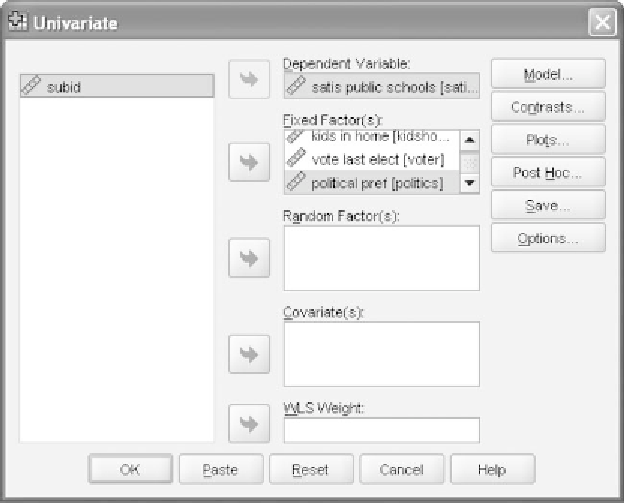Information Technology Reference
In-Depth Information
variable is a subject identification code
(subid)
. The next three variables
are the independent variables in the analysis; each has been assigned
arbitrary codes to represent the categories. These variables are
kidshome
(children present in the home coded as 1, children not in the home coded
as 2),
voter
(having voted in the last election coded as 1, not voting in the
last election coded as 2), and
politics
(liberal, moderate, and conservative
coded as 1, 2, and 3, respectively). The last variable in the data file is
our dependent variable, named
satisfac
, the score on the survey assessing
satisfaction with the public school system.
9.6.2 STRUCTURING THE ANALYSIS
From the main menu select
Analyze
➜
General LinearModel
➜
Univari-
ate
to reach the main dialog window shown in Figure 9.5. Click
satisfac
over to the
Dependent Variable
panel and in this order click
kidshome
,
voter
, and
politics
over to the
Fixed Factor(s)
panel. We will first run
the omnibus analysis to determine which effects are significant. Based on
those results we will then determine which post-ANOVA analyses we will
perform.
The order in which we bring the variables into the
Fixed Factor(s)
panel is important when we have three or more independent variables in
the analysis. Recall our discussion in Chapter 8 about the way in which
the observed means are displayed in the
Descriptive Statistics
output
table. We saw that earlier specified variables change more slowly than later
specified variables. Having structured the presentation of the example in
Figure 9.5
The main
GLMUnivariate
window.

